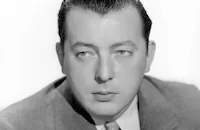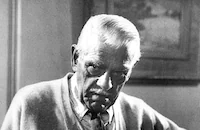Two Arabian Knights

Brief Synopsis
Cast & Crew
Lewis Milestone
William Boyd
Mary Astor
Louis Wolheim
Michael Vavitch
Ian Keith
Film Details
Technical Specs

Synopsis
Private Phelps and Sergeant McGaffney, who are constantly scrapping until they meet a common foe, are taken prisoners by Germans during the war, and failing many attempts to escape, they succeed in slipping out in Arab disguise. Finding themselves on a steamer bound for Jaffa, McGaffney, Phelps, and the ship's captain discover themselves rivals for Mirza, an Arab girl of rank. Young Phelps makes progress with her by sign language, even to the point of making her remove her veil. In Jaffa, a spying servant informs Shevket, her fiancé, of her acquaintance with the American, and her father, the emir, plots to imprison them, but they are saved by the American consul. The emir makes the soldiers knights so that Phelps can fight a duel with Shevket; but in a series of escapades, the boys foil their enemies and abscond with the girl.

Director

Lewis Milestone
Cast

William Boyd

Mary Astor

Louis Wolheim
Michael Vavitch

Ian Keith

De Witt Jennings
Michael Visaroff

Boris Karloff
Crew
Joseph August
Leeds Baster
John W. Considine Jr.
John W. Considine Jr.
Antonio Gaudio
Howard Hughes
Ned Mann
George Marion Jr.
Walter Mayo
William Cameron Menzies
James T. O'donohue
Wallace Smith
Nate Watt

Videos
Movie Clip


Film Details
Technical Specs

Award Wins
Best Director
Articles
Two Arabian Knights
The aviation film would evolve as Hell's Angels (1930), which Hughes would also direct. In the meantime Milestone had a film idea of his own to pitch to the neophyte producer: Two Arabian Knights (1927). Hughes liked the slapdash comedy of the World War I story, which was cast in the lusty, rugged mold of director Raoul Walsh's recent hit What Price Glory (1926). (The two films share a common writer, James T. O'Donohoe, and, in each, the two male leads enjoy the same bickering relationship.) According to Higham, Hughes not only agreed to produce the picture but eventually put $500,000 of his own money into it. He cast Louis Wolheim, William Boyd (later to play Hopalong Cassidy) and Mary Astor in the leads and made a deal with Jesse L. Lasky to release the film.
Two Arabian Knights relates the adventures of a sergeant (Wolheim) and a private (Boyd) who are captured by the Germans and escape by disguising themselves as Arabs. Dispatched to the Middle East, both doughboys fall for a beautiful Arabian princess (Astor), but must deal with a gang of cut-throats led by her father.
Milestone later recalled that it was Hughes who inserted some off-color gags into the film, including a bit in which Boyd kisses a veiled figure in the sultan's harem, only to discover that it's a eunuch. In a title, Wolheim exclaims, "This sultan guy sure is strange. Not all the girls in this harem are girls!"
Hughes also insisted on strict realism in certain scenes, including one in which the princess is fished out of the sea after surviving a shipwreck. Instead of having the sequence shot in a studio tank, Hughes dictated that the three stars be dunked into the cold, murky, oily waters of San Pedro harbor, where his yacht, the Ranger, could be used as a floating studio.
In her autobiography A Life on Film, Astor recalled that she was "about to drown, literally, "because she wore a costume made of heavy gold-metal cloth, with a gold lace-trimmed veil over her nose and chin." "We had to do the whole thing in bits or I would have sunk," she wrote, "and after each shot we had to be hauled aboard and warmed up and given a shot of brandy... We were all half-drunk, half-frozen and half-nauseated by the taste and smell of oil and salt-water."
Despite the earthy humor and boisterous action, Milestone delivered a grade-A production with intelligent performances from his cast, which included Boris Karloff in a small role as a character called "Purser." At the 1927-28 ceremonies, Milestone won the only Academy Award ever presented for "Best Comedy Direction." (In subsequent years, direction of all genres was melded into a single award.) Milestone's fellow nominees were Charles Chaplin for The Circus (1928) and Ted Wilde for the Harold Lloyd vehicle Speedy (1928).
Producers: Howard Hughes, John W. Considine, Jr.
Director: Lewis Milestone
Screenplay: James T. O'Donohoe, Wallace Smith, George Marion, Jr. (titles), from story by Donald McGibney
Cinematography: Joseph August, Antonio Guadio
Art Direction: William Cameron Menzies
Cast: William Boyd (Pvt. W. Dangerfield Phelps), Louis Wolheim (Sgt. Peter McGaffney), Mary Astor (Anis bin Adham/Mirza), Michael Vavitch (Emir of Jaffa), Ian Keith (Shevket).
BW-90m.
by Roger Fristoe

Two Arabian Knights
Quotes
Trivia
Notes
Lewis Milestone won a Best Directing (Comedy Picture) Academy Award for his work on this film.

Miscellaneous Notes
Released in United States 1927
Released in United States 1927













